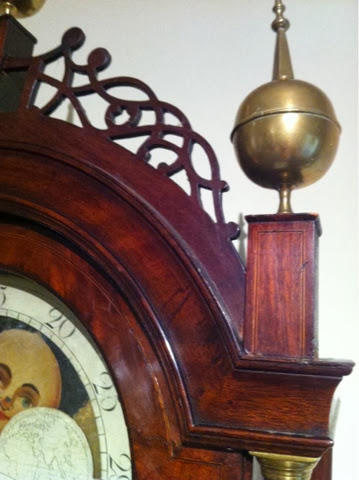The PR Buzz: "The exhibition looks at the wide range of kinetic art being made now: from work that's concerned entirely with motion and unpredictability, to sculptures that engage with contemporary political topics, to work that brings ancient myth into contemporary life."
Recommended For: the kind of quirky inspiration you can expect from the MIT Museum
The Experience:
Less than a week since the last time, I was again hustling through chilly Central Square on my way to the MIT Museum. They must be doing something right, right?
As you turn the corner into the entrance of 5000 Moving Parts, your ears are met with the pervasive squueeeeeeeeeee! of the moving sculptures. Trust me, do not turn and walk away. Thanks to the fabulous label writing of curator Laura Knott, this sound will have a very different meaning for you by the end of the show.
The introduction rightly locates the show on a continuum from Marcel Duchamp's 1913 Bicycle Wheel and its modes of meditating and commenting on the "kinetic world of material life." The selection of works in the show eloquently demonstrate these voices of critique.
It is a good choice to begin the show with the very interactive Please Empty Your Pockets by Mexican artist Rafael Lozano-Hemmel. This deceptively-simple illuminated conveyor belt uses a magical/mechanical form of intrusion to bond together one of the hidden spaces we all carry around with us. As Knott puts it, Lozano-Hemmer "misuses technologies of control" to relate us to each other.
A cluster of works by Anne Lilly, To Caress (which was heartbreakingly out of order), the mesmerizing Eighteen Eighteen, and To Conjugate anchor the center of the gallery. To Conjugate, with its antique fire engine fly wheels brings visitors expressively back to Duchamp's quote in the introductory text, "to see that wheel turning was very soothing, very comforting, a sort of opening of other avenues than material life of every day..."
At one end of the gallery there is a collaboration, or perhaps symbiosis might be more appropriate, between pioneer Arthur Ganson's Machine with Breath and Christina Campanella's BREATHE. I found Campanella's soundscape of Ganson's work is worth spending some time with. Listening to the headphones as I watched Machine with Breath, the layers of mechanical rhythm expanded until they gave the impression of great physical volume and distance. It was an uncanny sensation.
It is Knott's label writing for John Douglas Powers's seductively sinuous Haliades and deeply hypnotic Ialu that transform the dissonance of the gallery into the purposeful groan and squeal of ocean-going ships and the skirl of seabirds. Sound impossible? Come experience it for yourself! I have to say that I have rarely experienced an exhibition in which the label text adds as much to the experience and appreciation of the objects across to board as in 5000 Moving Parts. Knott's clear and eloquent voice finds details and connections that enhance the power of the objects themselves without crowding them or coming across as overly didactic. These wonderful mini-essays are helped greatly by the placement, size and design of the labels themselves. Well done, Laura and MIT Museum!
If I have one critique of 5000 Moving Parts (other than the one sculpture that was out of order), it is that the show should have been mounted in the Epstein Innovation Gallery on the ground floor so that these works could have beckoned through the windows to the "kinetic world of material life" passing on Massachusetts Avenue.
-Vident Omnes
While You're There: See Stanley Greenberg: Time Machines reviewed by me here.








